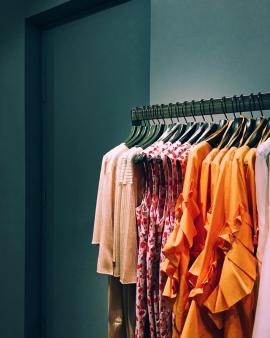Why Does the Retail Industry Need to Predict or Forecast Fashion Trends
 Pre-season planning is ane of the near complicated problems in forecasting. Every year, fashion retailers face the challenge of accurately predicting future demand for the next season.
Pre-season planning is ane of the near complicated problems in forecasting. Every year, fashion retailers face the challenge of accurately predicting future demand for the next season.
What will be the baseline need for a new item that will be introduced to the market place six months from now on? This is a billion-dollar question.
Fashion retailers need to recognize and accept that dubiety is a fact of life in demand forecasting. The first step for retailers to handle this is by segmenting products using advanced prescriptive and predictive analytics such as clustering algorithms to segment products and defining a supply concatenation strategy for each segment.
When planning for items with high forecast error, in that location is very little information available on what will be prevailing style in the futurity.
Forecasting for basic items such as a white t-shirt is relatively easier than fashion items, as forecasts tin be based on the sales history of like items.
But consider forecasting for a new mode particular such every bit a floral printed neon dress. That'southward when things go more than complicated.
Fashion items accept short life cycles, long pb times, and no historical data to depict upon. Chop-chop changing customer preferences, new contest, macro influences, and 'meet now buy at present' trends make information technology incredibly hard to predict need accurately in the long run. That's why judging how many units a fashion retailer will need to order from the supplier becomes more similar guesswork.
Gauge wrong, and you will either run out of inventory -which is a deal-breaker for many consumers, or stock besides much inventory that will need to be marked down later.
To our noesis, in that location isn't 'one right manner' to accurately forecast demand for new items in way. But these days, data is plentiful and there are different approaches that retailers employ.
Here are 6 commonly used methods.
1. Relying on designers, buyers, and merchandisers' opinion
Despite all the developments in AI-based demand forecasting, many fashion retailers nevertheless use a gut-based approach and trust their buyers, merchandisers, and designers to make pre-season forecasts.
Merchandisers read the market, buyers pay visits to product and design houses, and designers use their personal observations of what people will buy. In this method, long-term forecasts are limited by intuitions. This is more of an art and a inventiveness-based method rather than anything scientific.
Also, every designer or buyer tin piece of work on a narrow segment of the merchandise. For instance, ane can be working on the scarfs, whereas the other can be working on the ingather tops. Therefore, using this method alone, style retailers can't foresee the effects such every bit cannibalization or product commutation accurately.
2. Finding similar items in the past and projecting from there
Way retailers might have similar products that are close plenty to make comparisons. Remember of a retailer who wants to forecast demand for a 'never-out-of-stock production' like a black dress for the next season.
Typically, the retailer has access to the historical information of existing or previously sold blackness dresses for the past few years. Looking at previous years' information can help in forecasting demand at sufficient levels for existing blackness dresses. But they can't exist 100% efficient in predicting demand for a new detail. Because of the fast-irresolute nature of the fashion manufacture, information technology's quite incommunicable to fulfill the need of tomorrow's consumers if forecasts are based solely on yesterday'south data of similar products.
three. Working with a tendency forecasting agency
Unlike other retail industries, fashion is heavily trend-driven. Fashion retailers can work together with data-driven trend forecasting companies that offer predictive analytics on upcoming trends and products.
Joining MSDynamicsWorld.com gives you free, unlimited access to news, analysis, white papers, example studies, product brochures, and more. You can besides receive periodic electronic mail newsletters with the latest relevant manufactures and content updates.
Learn more than about us here


0 Response to "Why Does the Retail Industry Need to Predict or Forecast Fashion Trends"
Post a Comment